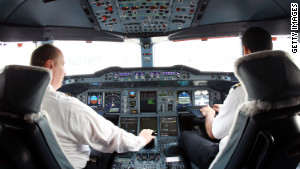Google’s engineers had been focused on perfecting how well those modified cars could handle freeway driving, and they imagined their technology hitting the market in a way that left humans sharing driving duties with their vehicle. “The idea was that the human drives onto the freeway, engages the system, [and] it takes them on the bulk of the trip—the boring part—and then they reëngage,” said Nathaniel Fairfield, a technical lead on the project, speaking at the Embedded Vision Summit in Santa Clara, California, on Thursday.
That approach had to be scrapped after tests showed that human drivers weren’t trustworthy enough to be co-pilots to Google’s software. When people began riding in one of the vehicles, they paid close attention to what the car was doing and to activity on the road around them, which meant the hand-off between person and machine was smooth. But that interest faded to indifference over weeks and months as people became too trusting of the car’s abilities. “Humans are lazy,” says Fairfield. “People go from plausible suspicion to way overconfidence.”
Pampered by autopilot, men in cockpit may be losing skills - The Times of India
Call it the irony of modern aviation. Technology that makes flying safe and cuts down stress of pilots in the cockpit can, at times of extreme crisis, turn counterproductive, say aviation experts. While the mystery over the disappearance of Malaysia Airlines MH370 deepens, the dependence on autopilot has come under radar.
Giant jetliners are flown on autopilot throughout the flight till their final approach to land at an airport. Pilots have become mostly "cockpit managers" who monitor dials, switches and display panels while the plane cruises above 35,000 feet at speeds above 900kmph. And this has its disadvantage : too used to the automatic flight control, young pilots often fail to brush up basic skills which they learned the hard way flying a single-engine Cessna at the flying school.
Who's really flying the plane? - CNN.com
Some fear that airliner
pilots rely too much on autopilot technology, saying that such a
reliance leads to lack of practice and infrequent use of manual piloting
skills. Experts have suggested this may have been a factor in the mysterious Atlantic crash of Air France Flight 447 from Brazil to Paris, which killed 228 passengers and crew.
As technology becomes
more and more sophisticated -- and trusted -- an expert at the
Massachusetts Institute of Technology says commercial airliners could
one day be piloted by remote control.

Hands-on flying hasn't disappeared, says pilot Patrick Smith, it's just different and, "in a lot of ways, it's more difficult."
No comments:
Post a Comment